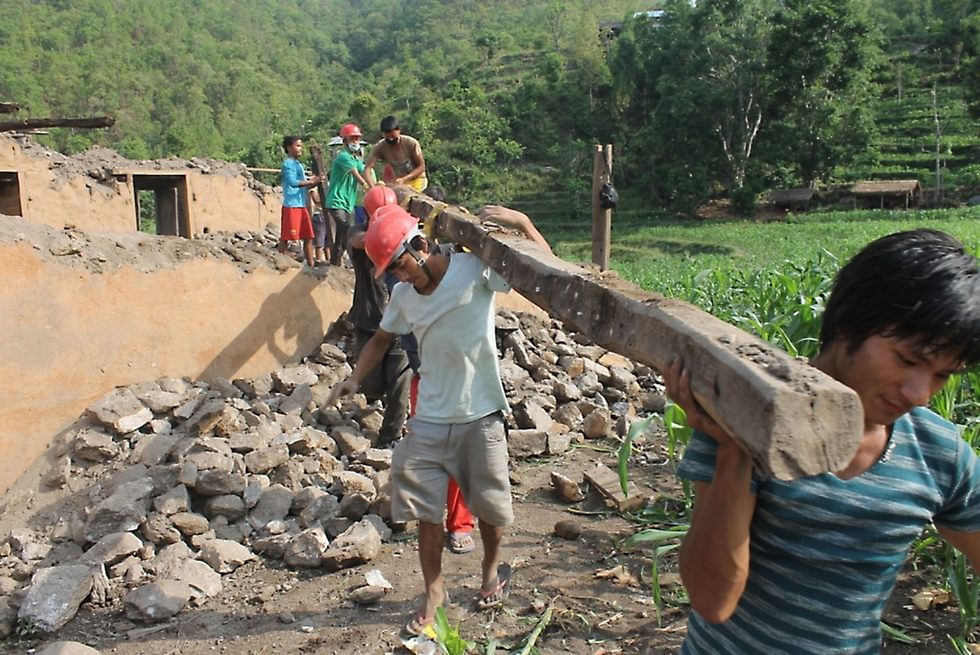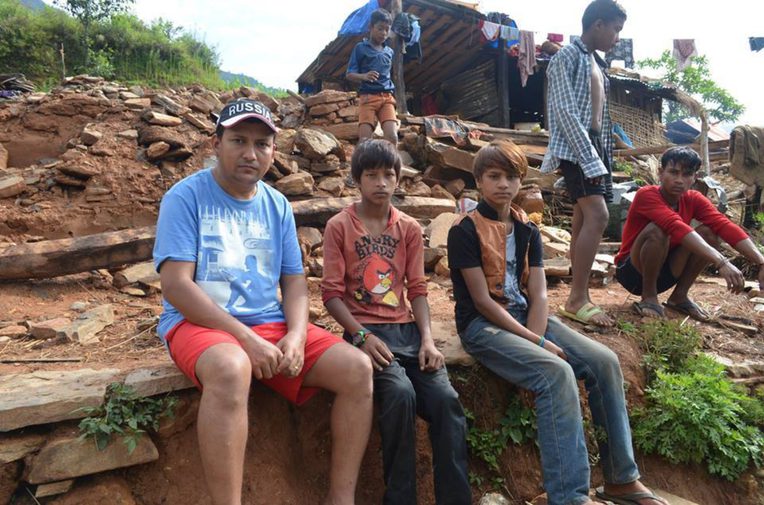Digging for Dalit: Social Justice and an Inclusive Anthropology of Nepal
From the Series: Aftershocked: Reflections on the 2015 Earthquakes in Nepal
From the Series: Aftershocked: Reflections on the 2015 Earthquakes in Nepal

Where can we find Dalits in discussions of the earthquakes? An apt metaphor would be “under the rubble,” with the muffled cries of hard-hit Nepali communities calling our attention to their social marginalization. Much like the caste fissure between pure and impure, the earthquakes pitted insiders and outsiders against each other in the realm of public commentary and rendered silent those voices aligned with Dalits’ concerns. Like the structures that collapsed, so did old social barriers (albeit temporarily), prompting some observers to report on instances of intercaste cooperation. Otherwise, caste concerns were portrayed as unimportant in the grand scheme of things.
This silence unintentionally reaffirms caste discrimination in Nepal.
On the ground, where it mattered most, individuals, families, and communities were denied basic emergency needs. There were even reports of rescuers turning away from buried people based on caste alone. Yet these failures could have been anticipated. Years before the earthquake, humanitarian organizations warned that social inequality placed Dalits at greater risk during disasters. Even after the earthquake, journalists and anthropologists did little to acknowledge Dalits in their writings on rural destruction, government fumbling, class and development, health care, and resilience during a crisis. Comprising between 13 and 20 percent of Nepal’s population and living throughout the country, Dalits remain the poorest and least healthy of any commonly recognized group. Although their social position in Nepal has improved recently the fact that Dalits are regularly subjected to educational, health, economic, religious, and legal discrimination, as well as physical violence, is cause for grave concern.
Inquiring and writing about Nepal’s Dalits parallels the discomfort of living as a Dalit. People do not want to hear about oppressive traditions of blatant discrimination. They respond with disbelief, resignation, and resistance. But social realities emerging from natural disasters expose what must change to form a more just world and, we suggest, an inclusive anthropology of Nepal. In this essay, we call attention to two narratives about inequality. The first, which we challenge, instructs us not to essentialize Nepali culture with sweeping “culturist” representations. Yet the ethnography of Nepal’s Dalits describes how caste and ethnicity do fundamentally shape relationships with powerful others, often resulting in extreme social marginalization. The second narrative bears witness to this. A report on Dalits’ experiences of actual and perceived discrimination in the earthquakes’ aftermath reveals troubling social issues that a public anthropology of Nepal might engage. An ethnographic account by Mitra Pariyar does the same:
It was dark when we arrived at Harka Damai and his wife Sita’s house atop a cliff in Thalajung, some 30 kilometers from Barpak, Gorkha District–the epicenter of the devastating April 25 earthquake. Their mud-and-stone house was reduced to rubble. Harka and Sita had taken shelter in a little animal shed above a Gurung village. When we arrived at the shed, all we could see was a buffalo and two little beds beside it. The couple was cooking rice and lentils on the veranda of an abandoned house nearby.
After the meal, we went to the shed to sleep. It was raining and slightly windy. Because the shed had no outer wall or covering, it was cold and wet—even under a blanket. I asked Harka why, nearly a month after the earthquakes, he had not yet received a proper tent like the cozy Red Cross tents. Visibly upset by my query, he pointed to a piece of tarpaulin barely three meters long and two meters wide stuck to one side of the shed. “This is all the relief I have received, plus 12 kilograms of rice, some lentils, and two bottles of cooking oil. Help is pouring in for higher people, but not for the like of us.”
Early the next morning, we visited his fallen house. From the top of the cliff, we could see many villages below. He asked: “Do you see a clear pattern? The village down in the valley, dominated by the high castes—Bahuns and Chhetris— has many houses down. But there are big and colorful tents everywhere. Look at the Gurung villages below us. They have some big tents, which they got much later. The households that did not receive a proper tent have been living together in those large tents—the ones villagers had acquired for communal festivities.”
“Why aren’t you in one of the communal tents?” I asked.
Sita replied: “Well, why do you think? We are untouchables. We cannot enter those tents, unless we want to get beaten up. We ended up in a dirty shed because we have neither money nor connections to people in power like the high castes, nor a big caring community like the Gurungs.”

As anthropologists of Nepal reflect on their role as writers in the midst of this crisis, we want to caution against dismissing common practices of social inequality for a rosier picture focused only on resilience. Likewise, we urge complementing excessive criticism of the government with the facts of caste discrimination as practiced daily in Nepali communities. We would hope that all anthropologists of Nepal and the Himalayas begin to ask about Dalits as a standard practice of doing anthropology in this region, in order to deepen our understanding of structural inequalities in villages, cities, offices, markets, and institutions. The greater ethical challenge, it seems to us, is the question of how best to write about other people’s discriminatory practices. The tendency to substitute class for caste analysis, or to neglect asking about Dalits in a predominantly janajati village or development organization, renders the anthropology of Nepal incomplete. Ours is a call to speak the name “Dalit” throughout the coming months and years of earthquake rebuilding.